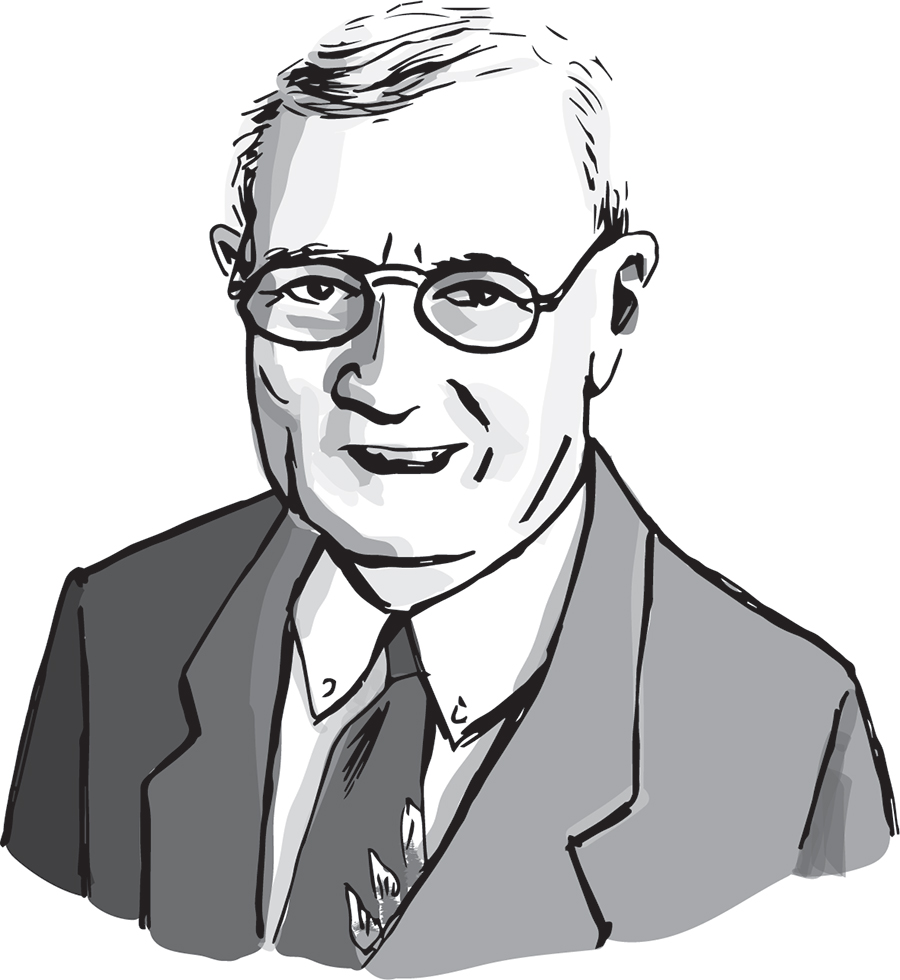Another Pandemic Doc in Training
Maurice “Maury” Mufson ’53 was a doctor in training during one of the deadliest flu pandemics in U.S. history. After graduating from Bucknell with a chemistry degree, he completed his medical degree at New York University Medical School. In 1957, he was a young intern at Bellevue Hospital in New York City when an influenza known as the “Asian flu” arrived in the United States, eventually killing 116,000 Americans.

Illustration: Jane Barnes
How was the Asian flu pandemic different from COVID-19?
The Asian flu did not last nearly as long as COVID-19 already has. In 1957, Bellevue wards were much more crowded than during the usual flu season. Many New Yorkers were getting sick and needed hospital care, and many died. Old-fashioned, high-roof ambulances with benches along each side carried 15 to 20 people at a time to the emergency room. I remember the crowding vividly. Our 40-bed ward was a long, rectangular room with windows that looked out over the East River and across to Brooklyn and toward the Bronx. Each ward had a senior resident and two interns, and we took care of patients as best we could, working long hours. When the ward was full, the admitting office would not send additional patients to us. So, if we held onto sick patients for just an additional day, we could do a lot more for the patients we already had on the ward. But then 10 more beds were added to the ward. When a vaccine was available, all house staff, nursing staff and faculty were immunized. By spring 1958 the pandemic went away; the virus had run its course. We returned to our regular routine, and those 10 beds were removed and put back in the basement.
How did the public respond to the Asian flu pandemic?
People did not wear masks in the street. The thinking was, “It’s just the flu again.” Most people got a mild-to-severe upper-respiratory illnesses, maybe bronchitis, and then a very small number got pneumococcal pneumonia, one of the most common bacterial pneumonia complications of the flu. All medical staff wore a mask when entering the ward, and the patients immediately put on their masks. When we examined patients, there were curtains on roller frames that provided temporary privacy. We believed that what we were doing was cutting-edge care. Looking back at it now, it wasn’t bad. It was just the beginning of some new procedures, some new drugs. We had good antibiotics — penicillin and tetracycline — for the treatment of pneumococcal pneumonia. We were giving large doses of penicillin as we would today.
Over your career, you served as a leading infectious-disease clinician and microbiology researcher. In 1976, you were appointed as the founding chair of the Marshall University Department of Internal Medicine and served in that position for 24 years. How did your department evolve in that time?
On my first day in the new department at Marshall, I was its only member. I recruited the first faculty members and managed my research laboratory at the Huntington [W.Va.] VA Hospital, among other duties. Within three years, I had recruited 16 faculty members. Within five years, the faculty number increased to 23 generalists and specialists. I was an academic pioneer.
— John Tibbetts